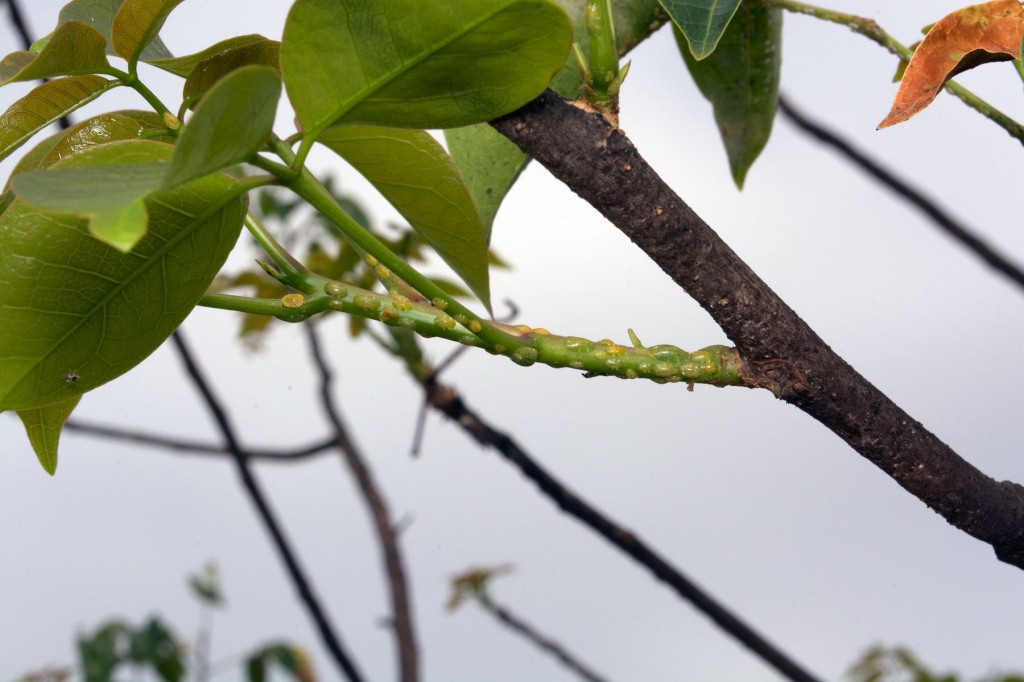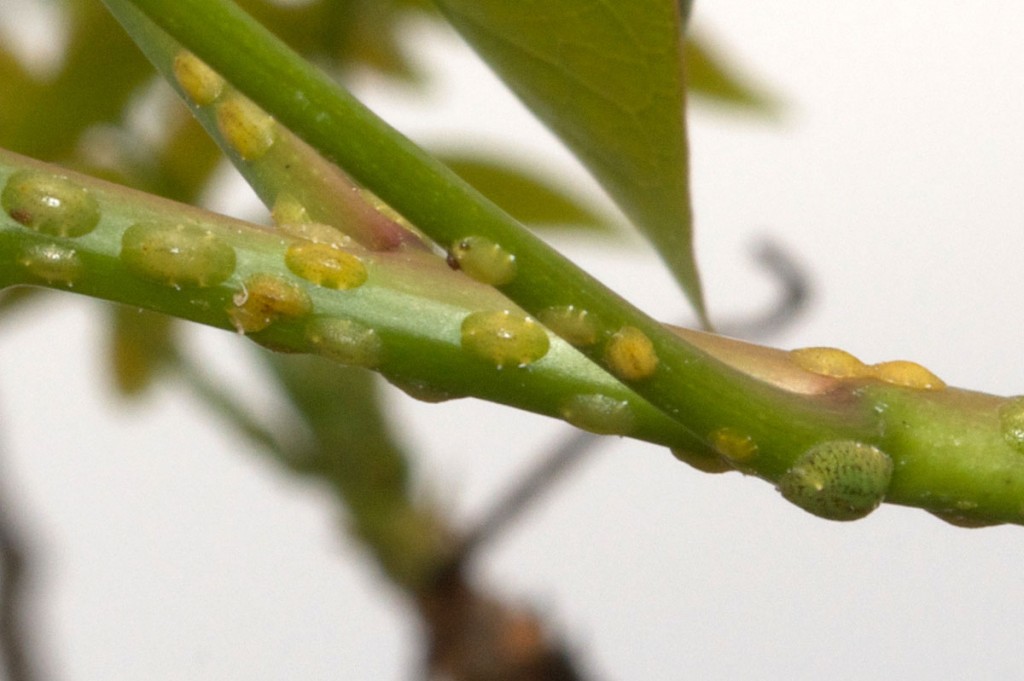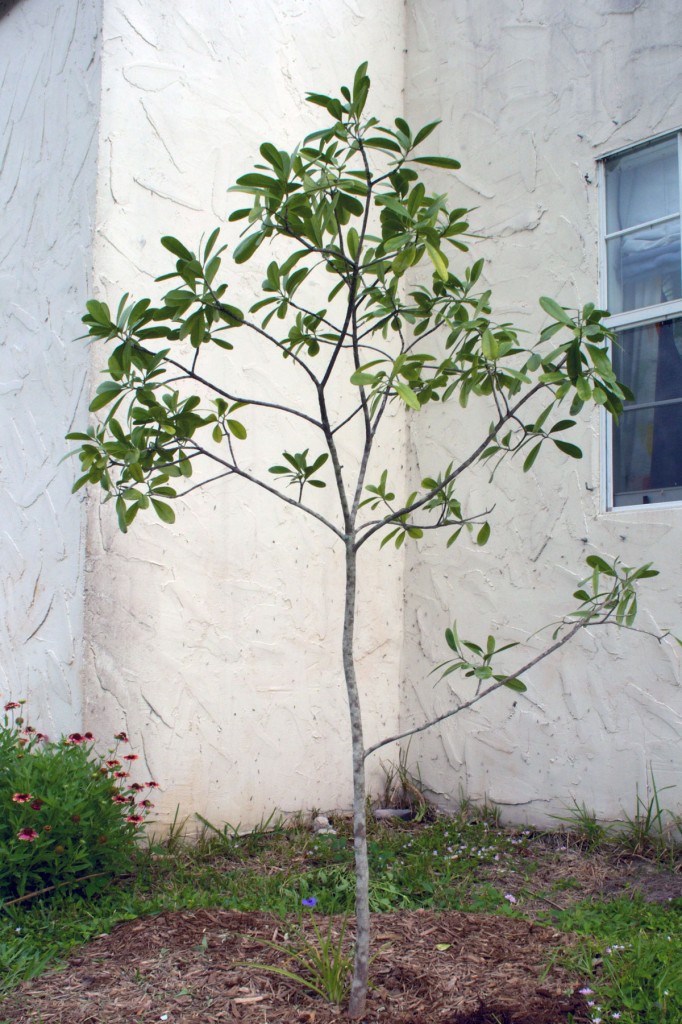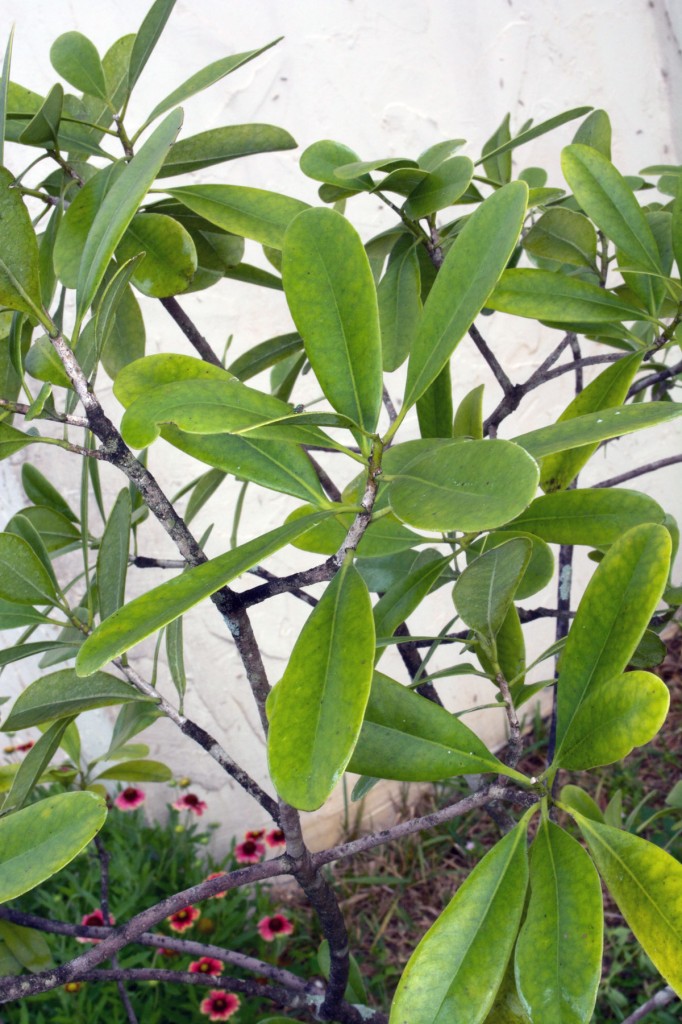The rainy season is right around the corner, so last month I worked on the landscape a little bit. I’d been disappointed in the performance of the gumbo limbo tree out front; it was in the shade of the towering coconut tree that dominates that front yard, and I wanted to see whether it would do better in full sun. It was bothered by scale, the spiraling whitefly infestation that’s hit south Florida, and the sooty mold that both those pests leave in their wake.
After about a month it’s obvious that full sun is not keeping the scale in check one bit:

For those of you who can’t get enough, here’s a close-up of the same image showing those nasty little honeydew-creating soot-making ant cows (seriously—ants farm the honeydew these insects produce, and tend the herd with care). I spent 45 minutes today exploring the fractal wilderness of a growing plant, trying to hand remove these little guys, and ants were crawling over me half the time.

Still, that tree was doing poorly where it was, and perhaps the more prominent location at the end of the driveway in full sun will motivate me to remove the scale more frequently, which should go a long way toward rehabilitating the plant.
With that corner opened up, I needed something to take its place, and I settled on the lovely wild cinnamon (Canella winterana),which is highly recommended by nursery owners and extension agents for its horticultural properties (attractive to pollinators, easy to grow, low maintenance, and the list goes on).
I’m looking forward to the tiny flowers and fruits this little tree is supposed to provide, and I’m sure the local pollinators will go nuts for it. Right now it doesn’t look like very much:

But once it takes off, it’s quite a treat for the gardener. Every part of the plant—leaves, flowers, and berries—is fragrant (the botanical term is “aromatic”), and the flowers and fruits, while subdued compared to some of the exotic plants you see around town, are still quite attractive. Here’s a view of the obovate leaves:

Although its common name is wild cinnamon, it is not the culinary variety (genus Cinnamomum), which comes from the East Indies, not the West Indies like this plant. And if you insist on using it as a spice, you’ll find out (according to Daniel Austin, the south Florida ethnobotanist) that fresh leaves are “fiery”:
Fresh leaves are fiery, and they have been used to season foods throughout its range. Indeed, in Cuba they have the common name pica-pica (it bites, referring to the stinging taste).
If you’re familiar with the spicy food of the west Indies (Jamaican jerked chicken is an example), you’d not be surprised to find that this spicy aromatic tree was used in seasoning foods in the region.
It might be that the fiery flavor comes from the potent chemicals it contains. According to Osorio, the plant is resistant to insect activity; according to Austin, this is probably because of the “potent chemicals” it contains, which “have been shown to have insecticidal activity.”
Etymology
The genus name Canella comes from the Latin diminutive canna (“reed”) and, according to Wikipedia, the species epithet winterana is an artifact from a period when this plant was confused with Winter’s bark, Drimys winteri, which is itself named for William Winter.
It also apparently excels in the somewhat cramped space I’ve given it right next to the house; I’m told that the branches don’t tend to get much more than four feet long, so I’m comfortable planting it that close to an area I might need to access.
References
Austin, D. 2006. Florida Ethnobotany. Boca Raton, FL: CRC Press.
Osorio, R. 2001. A Gardener’s Guide to Florida Native Plants. Gainesville, FL: U of Florida P.
